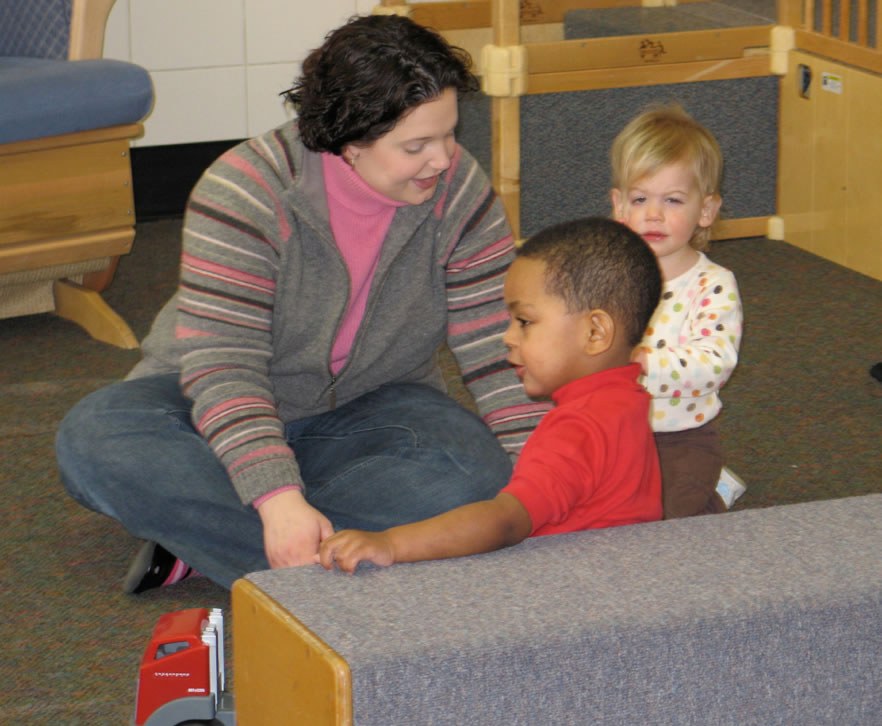What to expect from infants and toddlers and techniques for setting limits for infants and toddlers. Teaching discipline

Two-year-old Juan has found that dumping toys on the floor is a lot of fun. If someone leaves a bucket of blocks on the floor, he quickly dumps it and moves to the shelves to get the basket of cars to dump on the floor. This is driving you crazy. What would you do?
Would you:
- Take the basket out of Juan hand and put him in in a chair?
- Tell Juan "NO" every time he picks up a basket of toys to dump on the floor?
- Put Juan in a closed of area away from the toys?
- Try something else?
Guidance for very young children can be tricky. They are exploring and trying new things. They are too young to understand a lot reasoning, but they need limits to keep them safe.
Here are some techniques that work well with young children.
Prevent problems.
Do you feel like you're always saying, "No, No, No," to a young child? Think about what she is doing when you tell her "No." Is she touching something she shouldn't or moving to an area that isn't safe? Can these problems be prevented?
Crawl around the floor on your hands and knees.
What can you reach that would be a "No-No" for a young child? Move all those things up out of the way. Now you don't have to worry about a child getting them.
Try to prevent problems -- Get a child interested in something else.
Some caregivers keep their special things out, within the reach of young children. They think that telling a young child,
"No, don't touch," over and over will teach the child to stay away from these things. This is hard for both the child and the adult.
Young children need to explore and touch to learn more about the world. It's a lot easier on the child and adult if special things are put up where a child can't reach them.
If you don't want a child to climb on the stairs, put a gate in place.
Shut the door or put a gate across the doorways of rooms where children shouldn't go.
The next time a child does something wrong, think if there are ways this problem could be prevented in the future. Preventing problems makes your day easier.
Reinforce children for being good.
Try to ignore some behaviors.
If a child unrolls a roll of toilet paper, ask yourself, "Is he really hurting anyone or anything?" If your answer is no, this may be a time to take a deep breath and choose to ignore the behavior. If you give too much attention to these times, the child may want to do this again and again just to get your attention. Save your discipline for when he does something that may hurt him or others.
Distract or redirect young children from things you don't want them to do.
If a child has a marker and she's starting to write on the wall, don't grab the marker out of her hand. Instead, put some paper on the table or floor and tell her, "Sarah, come over here to use your marker on the paper." It's easier to get a young child interested in something else than to take something away.
When you're getting a child interested in something else, think about what she's doing and find a safe way to try that activity. For example, if a child keeps climbing on and off a table, think about a safe way for her to climb. Maybe you could take everyone outside so she can spend some time climbing up the ladder to a low sliding board. If a child starts throwing blocks, think about what and where he can safely throw. Tell him, "It isn't safe to throw the blocks. Someone could get hurt. Come over and throw these bean bags into the basket." If a child likes to drop food on the floor from her chair, she's probably finished eating, but dropping things is a lot of fun. Put her down on the floor and give her some clothespins or blocks to drop in a plastic container. Show her how to dump them out and drop them in the container again and again.
Reinforce children when they are playing nicely.
Too often adults notice only when a child is doing something wrong. Watch for children being good and let them know it with a smile, a hug, or a few words of praise. "You are being so gentle with the doll." Children want to please you. Giving them smiles, pats on the back, hugs, and kind words are the best rewards.
Back to Juan and dumping toys.
What can you do with a child who likes to dump the toys on the floor? Why do you think Juan likes to dump toys on the floor? Do you think he likes the sound when they hit the floor? Does he like the way they fall?
Can you provide an area where Juan may dump toys, put them back in the basket and dump them over and over? Can you show Juan different ways to play with toys? For instance, try building a tower or laying out a roadway and then encouraging Juan to use the small cars on the roadway.
This is a good way to distract Juan from dumping the blocks and redirecting him to something he can explore.
Tips 5-11

